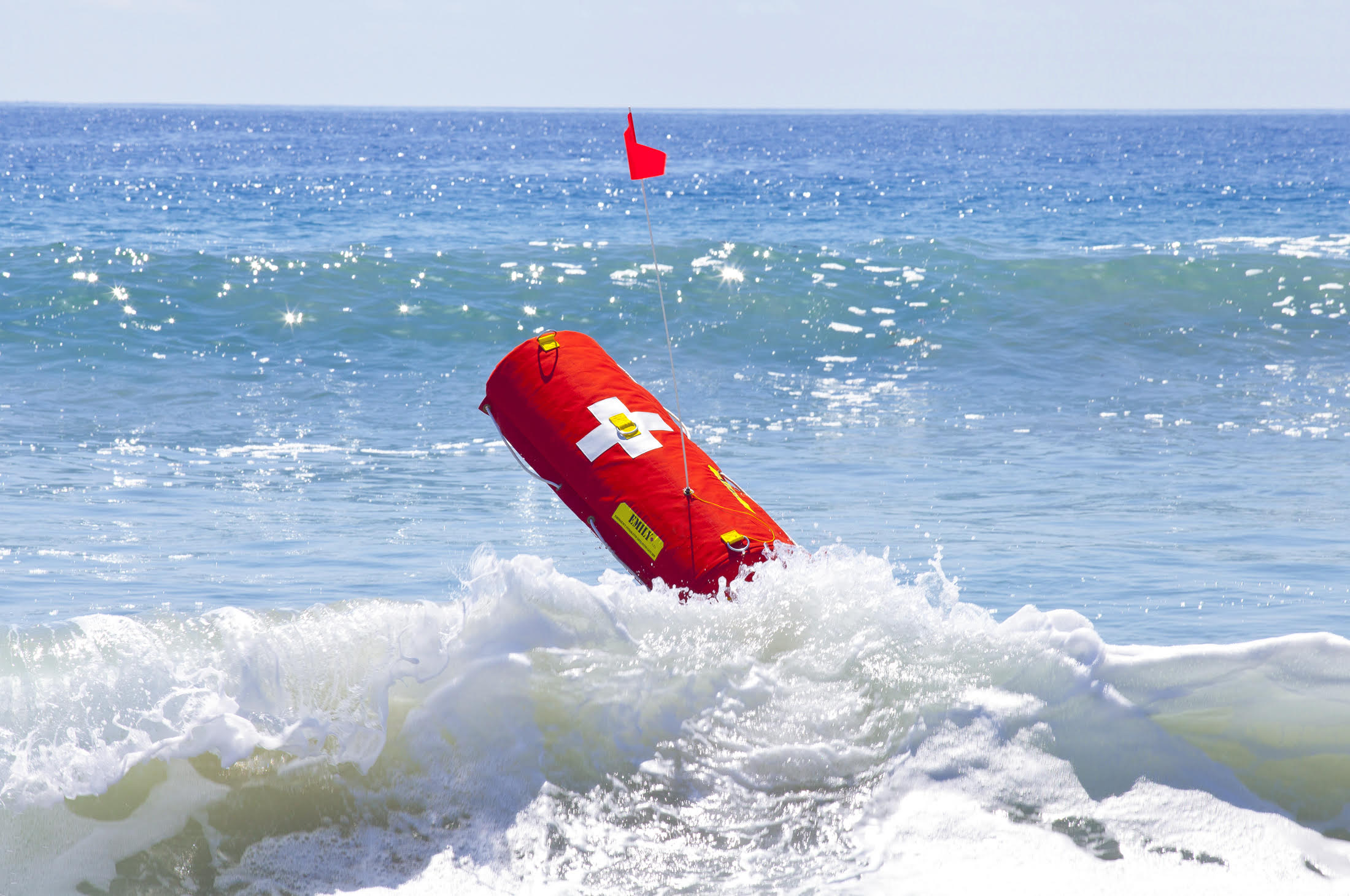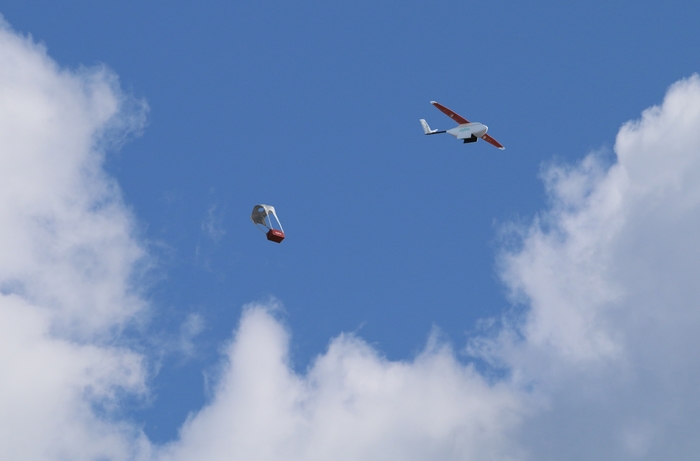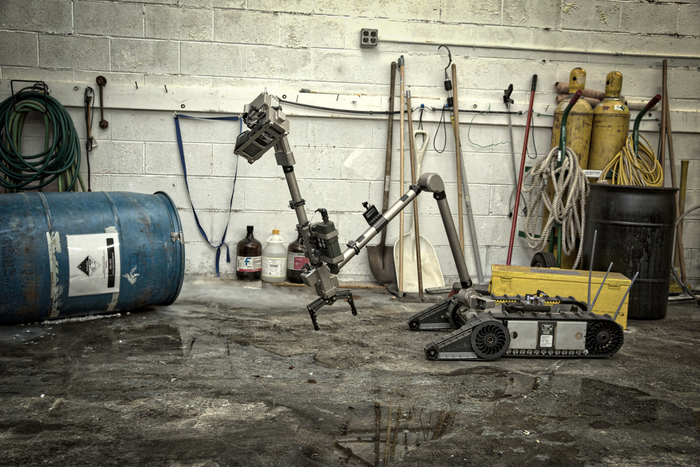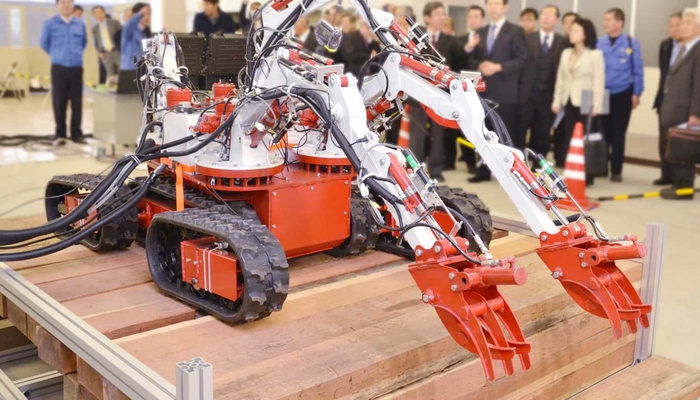
Robohub.org
Robots to the rescue!

Emily – short for Emergency Integrated Lifesaving Lanyard – is a remote-controlled rescue boat used by lifeguards to save people’s life at sea (Photo: Hydrolanix – EMILY robot)
This article was first published on the IEC e-tech website.
Rapid advances in technology are revolutionizing the roles of aerial, terrestrial and maritime robotic systems in disaster relief, search and rescue (SAR) and salvage operations. Robots and drones can be deployed quickly in areas deemed too unsafe for humans and are used to guide rescuers, collect data, deliver essential supplies or provide communication services.
Well-established use
The first reported use of SAR robots was to explore the wreckage beneath the collapsed twin towers of the World Trade Center in New York after the September 2001 terrorist attacks. Drones and robots have been used to survey damage after disasters such as the Fukushima Daiichi nuclear power plant accident in Japan in 2011 and the earthquakes in Haiti (2010) and Nepal (2015). Up to now, more than 50 deployments of disaster robots have been documented throughout the world, according to the Texas-based Center for Robot‑Assisted Search & Rescue (CRASAR).
Robin Murphy, head of CRASAR and author of the book Disaster Robotics, says:
The impact of earthquakes, hurricanes, flooding […] is increasing, so the need for robots for all phases of a disaster, from prevention to response and recovery, will increase as well.
Eyes in the sky
Drones, also known as unmanned aerial vehicles (UAVs), can be used to detect and enter damaged buildings, assisting rescue robots and responders on the ground by speeding up the search for survivors through prioritizing which areas to search first. The more quickly SAR teams respond, the higher the survival rate is likely to be. Rescue drones create real-time maps by taking aerial surveys and send back photos, videos and sensor data to support damage assessments.
Drones used for SAR and disaster relief are most commonly powered by rechargeable batteries and are operated autonomously through onboard computers or by remote control. Their equipment typically comprises radar and laser scanners, multiple sensors and video and optical cameras as well as infrared cameras that are used to identify heat signatures of human bodies and other objects. This helps rescuers to locate survivors at night and in large, open environments and to identify hot spots from fires. Listening devices can pick up hard-to-hear audio, while Wi-Fi antennas and other attachments detect signals given off by mobile phones and plot a map that outlines the locations of victims.
New technologies in use or development for rescue drones and robots include ways of increasing survivor detection. Sensors scan areas for heartbeats and breathing, multisensor probes respond to odours or sounds and chemical sensors signal the presence of gases.
Standards put safety first
Much of the technology used in drones comes from commodity electronics developed for consumer essentials like mobile phones. Drones also require global positioning satellite (GPS) units, wireless transmitters, signal processors and microelectromechanical systems (MEMS). The flight controller also collects data from barometric pressure and airspeed sensors.
IEC International Standards produced by a range of IEC Technical Committees (TCs) and Subcommittees (SCs) cover the components of drones such as batteries, MEMS and other sensors, with an emphasis on safety and interoperability.
IEC TC 47: Semiconductor devices, and its SC 47F: Micro electromechanical systems, are responsible for compiling a wide range of International Standards for the semiconductor devices used in sensors and the MEMS essential to the safe operation of drone flights. These include accelerometers, altimeters, magnetometers (compasses), gyroscopes and pressure sensors. IEC TC 56: Dependability, covers the reliability of electronic components and equipment.
IEC TC 2: Rotating machinery, prepares International Standards covering specifications for rotating electrical machines, while IEC TC 91: Electronics assembly technology, is responsible for standards on electronic assembly technologies including components.
IEC SC 21A: Secondary cells and batteries containing alkaline or other non-acid electrolytes, compiles International Standards for batteries used in mobile applications, as well as for large-capacity lithium cells and batteries.
Ideal for isolated and remote hard-to-access areas
Using drones is useful not only when natural disasters make access by air, land, sea or road difficult, but also in isolated regions that lack accessible infrastructure. Recently, drones have started delivering medical supplies in areas where finding emergency healthcare is extremely difficult. In 2014, Médecins Sans Frontières piloted the use of drones to deliver vaccines and medicine in Papua New Guinea. In 2016, the US robotics company Ziplinelaunched a drone delivery service, in partnership with the government of Rwanda, to supply blood and medical supplies throughout the mountainous East African country. Zipline says its battery-powered drones can fly 120 km on a single charge to deliver medicine speedily, without the need for refrigeration or insulation.

Rwanda launches world’s first drone service to deliver blood to patients in remote areas of the country (Photo: Zipline)
A project by a company in the Netherlands to help refugees who get into difficulty in the Mediterranean Sea offers another example of drones being used for humanitarian purposes. Its search and rescue (SAR) drone is intended to fly over long distances, detect boats and drop life jackets, life buoys, food and medicine if necessary.
Currently only about a quarter of the world’s countries regulate the use of drones. Their deployment in disaster relief operations poses challenges involving regulatory issues, particularly when decisions are made on an ad hoc basis by local and national authorities. Humanitarian relief agencies also warn of the risks of relief drones being mistaken for military aircraft.
Two arms good, four arms better
Japan and the US lead the world in the development of rescue and disaster relief robots. Teams from both countries collaborated in recovery efforts after an earthquake and tsunami hit Japan in March 2011, causing a meltdown at the Fukushima nuclear power plant. While a Japanese team operated an eight-meter long snake-like robot fitted with a camera, the US contribution included two remote-controlled robots. The first was a lightweight 22 kg model previously used for bomb disposal and other military tasks before being reconfigured for disaster relief operations. The larger US model, capable of lifting up to 90 kg, was adapted from a device originally used for firefighting and clearing rubble.

Endeavor Robotics 510 Packbots are deployed in emergency situations when direct human intervention is dangerous or impossible, such as after industrial or nuclear accidents. These robots were used at the Fukushima nuclear power plant (Photo: Endeavor Robotics)
In 2017, Japanese researchers unveiled a prototype drone-robot combination for use in disaster relief work. It consisted of a vision-guided robot equipped with sensitive measuring systems, including force sensors, and a drone tethered to the robot. Four fish‑eye cameras mounted on the drone capture video of overhead views, allowing the robot’s operator to assess damage in the surrounding area.
Another Japanese rescue robot unveiled in 2017 is a multi-limbed robot that is 1,7 m tall, with four arms capable of independent operation and four caterpillar treads for mobility. Called The Octopus, it is capable of lifting 200 kg with each arm, crossing uneven terrain and lifting itself over obstacles with two arms while the other two clear debris.

Octopus, developed by Japan’s Waseda University a robot designed to clear rubble in disaster areas including nuclear facilities (Photo: Waseda University)
In the US, researchers are exploring ways in which a small and light collapsible, origami‑inspired robot, first produced by the National Aeronautics and Space Administration (NASA), could be adapted for use as a rescue robot. The device, known as PUFFER (Pop‑Up Flat Folding Explorer Robot) is designed to pack nearly flat for transport, and then re‑expand on site to explore tight nooks and crannies which are inaccessible to larger robots.
Over and underwater too
Given that 80% of the world’s population lives near water, maritime robotic vehicles can also play an important role in disaster relief by inspecting critical underwater infrastructure, mapping damage and identifying sources of pollution to harbours and fishing areas. Maritime robots helped to reopen ports and shipping channels in both Japan and Haiti after major earthquakes in 2011 and 2010 respectively.
In the Mediterranean, a battery‑powered robotic device first developed for use by lifeguards to rescue swimmers has been adapted to help rescue refugees crossing the Aegean Sea from Turkey. This maritime robot has a maximum cruising speed of 35 km/h and can function as a flotation device for 4 people.
Easy to find components and technology
Rescue robots use components and technology found in most other robots used for commercial purposes. Actuators and other electric motors, accelerometers, gyroscopes and dozens of sensors and cameras providing 360⁰ views enable these robots to maintain balance while moving over uneven ground covered with rubble or debris, and to get a sense of the environment around them.
A robot operating in a hazardous environment needs independent power and sensors for specific environments. It may be cut off from its human operator when communication signals are patchy. When remote operation guided by sensor data becomes impossible, a rescue robot needs the ability to make decisions on its own, using machine learning or other artificial intelligence (AI) algorithms.
Several IEC TCs and SCs cooperate on the development of International Standards for the broad range of electrotechnical systems, equipment and applications used in rescue robots. In addition to IEC TC 47: Semiconductor devices and IEC SC 47F: Microelectromechanical systems, mentioned above, other IEC TCs involved in standardization work for specific areas affecting rescue and disaster relief robots include IEC TC 44: Safety of machinery – Electrotechnical aspects; IEC TC 2: Rotating machinery; IEC TC 17: Switchgear and controlgear; and IEC TC 22: Power electronic systems and equipment.
Where humans fear to tread
The number of disasters recorded globally has doubled since the 1980s, with damage and losses estimated at an average of USD 100 billion a year since the start of the new millennium, according to the Overseas Development Institute (ODI), a UK think tank. This trend is likely to lead to increased demand for unmanned robotic devices that can assist disaster relief operations on land, in the air and at sea.
Robots of all kinds play a growing role in supporting SAR teams. Increasing autonomy will create more capable ground robots, while a combination of rapid technological advances and regulation should see the market for disaster relief drones soar over the next five years.
MarketsandMarkets, a research company, estimated in October 2016 that the total global market for drones, comprising commercial and military sales, would grow at a compound annual growth rate (CAGR) of nearly 20% between 2016 and 2022 to exceed USD 21 billion. Drones designed for humanitarian and disaster relief operations will account for 10% of the future drone market, according to the US‑based Association of Unmanned Vehicle Systems International (AUVSI).
tags: c-Exploration-Mining, cx-Aerial, cx-Industrial-Automation, Flying, Mapping-Surveillance, review, Service Professional Underwater, UAV, UGV, UUV




